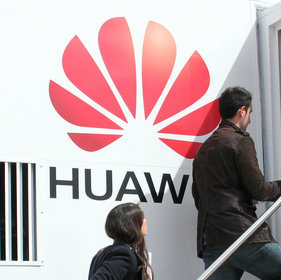Why India Is Unlikely to Ban Huawei
While the Chinese vendors have been excluded from some other markets, India will probably not follow suit.

Chinese equipment bellwether Huawei seems to be forever in the news for the wrong reasons. Lately, the company has faced bans or exclusions in countries such as Australia, New Zealand and the UK. But in India, Huawei has won support from government authorities as well as the industry. (See Australia Excludes Huawei, ZTE From 5G Rollouts and Huawei Poses Security Threat, Says UK Watchdog.)
That is despite a recommendation from India's telecom export body, the Telecom Equipment and Export Promotion Council (TEPC), that India should ban the use of equipment from Chinese vendors including Huawei Technologies Co. Ltd. as well as ZTE Corp. (Shenzhen: 000063; Hong Kong: 0763) and Fiberhome in government networks. Regardless of this advice, the government has indicated there is no proposal to ban Huawei. It has also pointed out that most other vendors also source components from China.
It is not just authorities that have spoken out in Huawei's support. In a letter, the Cellular Operators Association of India (COAI) has urged the Department of Telecommunications (DoT) not to ban Huawei. "They [Huawei] are suitably equipped to prepare operators and industry to build 5G capabilities in operations, in organization and most importantly in the ecosystem and to ensure they are fully compliant with all government requirements," said Rajan Mathews, the head of the COAI.
The latest developments follow media reports last month suggesting the DoT would ban Huawei from participating in 5G trials. Yet while it was conspicuously absent from a list of vendors approved for those trials, Huawei was later invited to be a part of the initiative and is likely to start work this month. The Chinese vendor has also offered to share source code used in its products to allay any security concerns that authorities might have. (See Huawei (Finally!) Gets 5G Invite From India and India Joins US & Australia to Give Huawei, ZTE 5G Cold Shoulder – Reports.)
India and Huawei have had an on-off relationship that dates back a long time. About eight years ago, Huawei faced an eight-month ban in India because of security concerns, but this was later revoked. Since then, the use of Chinese equipment in India has continued to rise. Imports of mobile device components and network equipment from China grew from $1.3 billion in 2014 to $9.4 billion in 2017, according to data released by the Ministry of Commerce and Industry.
Want to know more about 5G? Check out our dedicated 5G content channel here on
Light Reading.
It is easy to see why India's government and industry figures continue to support Chinese vendors. For one thing, they have always been price competitive -- a critical factor in a market that has one of the lowest average revenue per user (ARPU) metrics in the world. Without being able to make use of low-cost equipment, India's operators would not have been able to market such affordable deals. Even when telcos are not sourcing equipment from Huawei and ZTE, the presence of the Chinese vendors has put pressure on other suppliers to lower their prices.
Besides providing low-cost equipment, the Chinese vendors have been offering staggered payment plans, spread over many years. This has also suited the Indian telcos by allowing them to reduce their capital expenditure. Moreover, authorities have tried to address any security concerns by requiring India's telcos to make sure the equipment they use is tested and safe.
Ultimately, the Chinese vendor is deeply entrenched in the country's telecom industry. Despite the restrictions it is encountering in many countries, Huawei seems likely to remain a force in India.
�— Gagandeep Kaur, contributing editor, special to Light Reading
Read more about:
AsiaAbout the Author(s)
You May Also Like




_International_Software_Products.jpeg?width=300&auto=webp&quality=80&disable=upscale)







